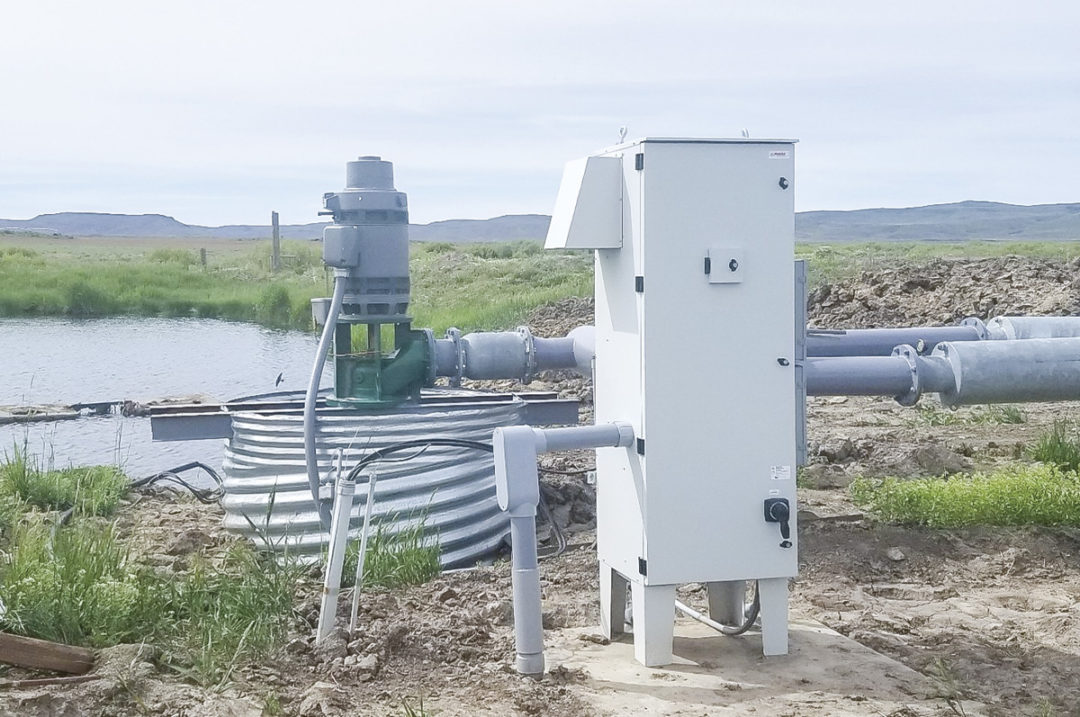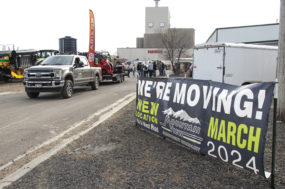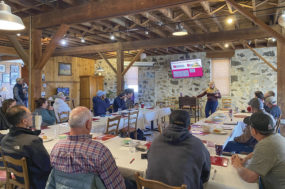I have been selling, servicing and programming variable-frequency drives (VFDs) in and around Idaho for the last 25 years. There has never been a more “interesting” time in this industry than the last couple of years. With supply chain interruptions, freight challenges, inflationary pressures, astronomically extended lead times and the surging popularity of new active front-end VFD technology, the VFD industry has seen some major reshuffling recently, and Idaho is smack dab in the middle of it all.
For those reading this article who may not even know what a VFD is, a VFD is an electrical device that can change the speed of an electric motor automatically in response to a sensor. In pumping, for example, a VFD can speed up or slow down the motor to provide more or less flow automatically as needed, which can keep the flow, level or pressure at a constant, even if demand varies. In doing so, the VFD can reduce the amount of electricity consumed, thereby reducing the power bill. A VFD can also reduce wear and tear on the system, control ramp-up and ramp-down times, limit inrush current to the motor (soft-start) and many other automation benefits. VFDs are also commonly used to convert one-phase to three-phase power, and some can even voltage-double without a transformer. VFDs are also used on conveyors, HVAC fans, storage cellars, compressors and anywhere controlling the speed of a process is important.
If you are considering a VFD for your operation, I have created a list of seven topics that will help you make a more informed purchasing decision.
- Experience: Ask the contractor for a list of references. How long have they been installing VFDs? Does the contractor have experience with your type of equipment and processes? Is the proposed VFD a well-known brand? How many people are there locally who can understand, program and repair that brand?
- Inventory: Does the contractor, local distributor and/or manufacturer stock complete VFDs and repair parts locally? How long does it take to get parts shipped? What is the lead time on a new VFD should all else fail? With the ongoing supply chain issues, finding a VFD that is made in the USA can be vital to keeping your operation up and running.
- IEEE-519 compliance: In Idaho, and surrounding areas, the local power provider requires that all VFDs meet a power quality standard known as IEEE-519. When VFDs operate, they use diodes that convert AC to DC power. These diodes create “noise” that is returned to the power lines and can damage surrounding electrical equipment, degrade the power factor and interfere with the normal flow of electricity. This noise is known as “harmonics,” and IEEE-519 sets limitations on the amount of harmonics that a VFD can create at a given location. The surging popularity of active front-end VFDs that I mentioned earlier is due in part to the fact that they create a very minimal amount of harmonics – well under the limits allowed by IEEE-519 – and they do this without requiring any additional noise-filtering components, which can be quite expensive to add.
- Installation: Where will the VFD be installed? Consider indoor/outdoor and factors like seasonal extremes, pivot spray, direct sunlight, chemical exposure, pests, weed overgrowth, smoke, windblown dirt. Each of these factors can have a detrimental impact on the life-span of electrical components. Consider the complete installation costs including freight, on-site electrician labor, wires and conduit. An active front-end VFD is a single-cabinet solution, whereas a 6-pulse diode VFD that requires a separate harmonics-filtering cabinet requires two times the installation costs, as you are installing two (or more) cabinets instead of just one. Beware of any cabinet that crams the harmonic filters into the same cabinet as the VFD; the heat-loading is astronomical and thermal degradation will rapidly degrade your VFD.
- Functionality: Make sure your VFD is suited to your application with the appropriate software. There are many drives that have 700-plus parameters with 700-page owner’s manuals, and they display unrecognizable terminology and indecipherable codes that make using or servicing them impossible. If the keypad resembles a scientific calculator, you can probably guess that interfacing with it will be difficult at best. Ask for a live demonstration of the VFD's working keypad.
- Repairability: With the current state of things – especially in the world of electronics – most items are designed to fail so that you have to buy a new one. VFDs are no different, but you can find some that are intentionally designed to be repaired rather than replaced. It all comes down to the cost-effectiveness of a given repair. A simple place to start is to ask the potential contractor what is the cost of the three most expensive repair parts in the VFD panel. If that total cost is less than a new VFD, then repair probably makes sense. In most foreign-made VFDs, a simple control board can cost you over $2,000 – and that board was probably made in China for less than $100.
- Tech support: Good tech support is like a good lasagna – it should have many layers – and it should begin with the installing electrician, then the contractor, then the local distributor, then the local manufacturer’s rep, then the factory support hotline. Each of these layers should be properly trained in at least the basics of programming and troubleshooting, and have quick access to the next layer as needed. Ask the contractor how many qualified people are available locally to assist with a tech support issue.
If you are considering a VFD, and would like to know more, I am available for consultations in and around southern Idaho.




.jpg?t=1687979285&width=640)



